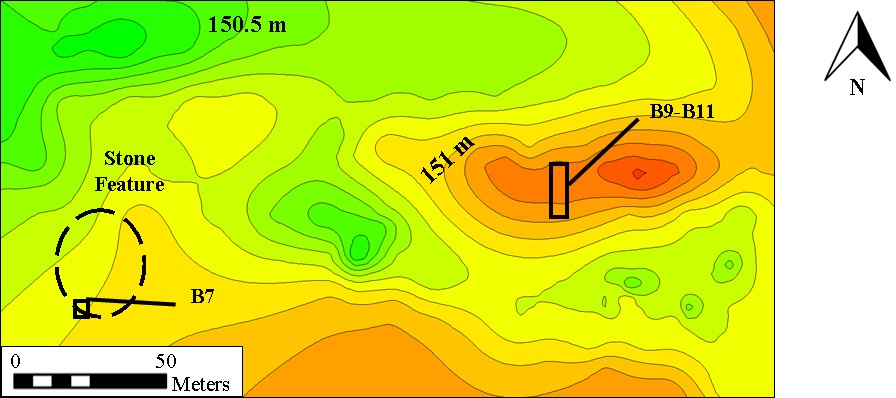It was a little on the warm side today, but we were able to make good progress. In Unit B7 in the western part of the Wynnewood North Field, Amanda, Constants, Hannah, and Fiona appear to have found the edge of the stone feature. Although it is not yet clear if this is the edge of a prehistoric oven or a historic racetrack, this unit has produced few, if any, historic artifacts below the plow zone.

In the eastern half of the site, a compact historic surface was encountered in Unit B11 last week. Today, Shonda, Matthew, and Valerie discovered a similar layer in their unit (B9). It is difficult to see, but like its counterpart in B11 a few meters to the north, it is much more compact than the surrounding soil. If one looks at it long enough, it may begin to take on the shape of something resembling a moustache.

Sandwiched in between these two historic deposits, in Unit B10, is a prehistoric Mississippian midden. The soil in the midden is a very dark gray color, which means it can sometimes be difficult to spot features. Despite this, a possible post hole was identified. So far, no other post holes have been visible in this unit, but Maddie, Devin, Nicolas, and JP are keeping their eyes open.

It was in this same unit last week that our first fabric-impressed saltpan sherd was discovered. The sherd was about 2 inches in diameter, but apparently this was not good enough for Maddie, as she found an even larger saltpan sherd today. This sherd is almost 6 inches in diameter and would have been part of the vesselís base.
Last, but certainly not least, John found what could end up being our second (almost) intact medicine bottle in Unit B11. The bottle is located just to the south of a post that appears to have been supported with a couple limestone wedges. Initially it was thought that the post was prehistoric, but this may not be the case.